Oh Snap
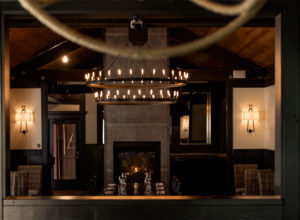

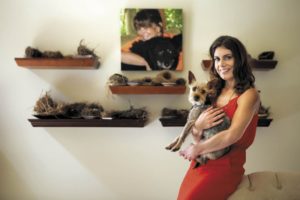
It seems like the stuff of sweet dreams: almond biscotti, hand-dipped in a custom blend of Guittard milk and semisweet chocolate. Yet for Daniela Tempesta, the classic Italian cookie posed a challenge, prompting what would almost overnight become a life-changing decision.

Just over a year ago, Tempesta lost her mother, Boncora Biscotti founder Bonnie Lynn Tempesta, who died suddenly from breast cancer. At the time, Daniela Tempesta was pursuing her dream of being a licensed psychotherapist. Suddenly, she was faced with a critical decision: follow her beloved career, or take over her mom’s thriving Sonoma business that at one time was the largest biscotti maker in America.
“My mom started the (original) company when I was 3, so I grew up in a cookie factory,” said Tempesta, 34. “But when people would ask if I wanted to go into the business, I always said, ‘Not a chance.’ It just wasn’t my gig.”
Bonnie Lynn’s cancer came out of nowhere for the family, discovered while Tempesta was on her honeymoon with her husband, Jeff Wycoff, in 2014. With her marriage had come a full house of four stepchildren, and she was also juggling a quickly growing private mental health practice. Her mother died just two months later, at 61.
“My whole world turned upside down,” Tempesta said. “I had no formal training in the food industry. But what could I do? Close it down?”
After taking a few months to consider her situation, she did what made cookie lovers across the nation cheer: She decided to not only maintain the business, but grow it. It was a blessed choice, it seems, as in the first six months of 2015, Tempesta more than doubled the number of retail accounts selling her biscotti, including gourmet groceries, cafes and coffeehouses. She estimates her Kenwood bakery produces about 9,000 cookies a month in slower times, surging up to 25,000 biscotti a month in the busy season of September through December.
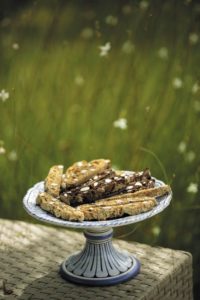
“My heart kept pulling me back to biscotti,” she said. “Now, I think I am coping with my grief by keeping her legacy alive.”
When Bonnie Lynn started her company in her home kitchen in San Mateo in 1983, it was a labor of love with her own mother, Italian-born Aurora Marcheschi. Originally called La Tempesta Bakery Confections, the shop used a treasured family recipe, courtesy of Bonnie Lynn’s Florentine aunt, Isa Romoli. The first customer was a fancy chocolate shop in San Francisco, where Bonnie Lynn worked making coffee.
Nobody was producing local biscotti for sale at the time, but she had little idea of what passion the treats would ignite, introducing legions of fans to the flat, crunchy, twice-baked cookies that Italians love to dunk in vin santo wine or espresso.
Tempesta’s handmade, hand-cut cookies are different from most biscotti Americans have tasted. Rather than thick, heavy, sometimes tasteless mass-produced slabs, these biscotti are ethereally crisp and light in the biscotti di Prato style of Prato, Italy. Flavor sings in each bite, the cookies studded with crunchy Northern California almonds and optionally dipped in chocolate, or a new Boncora triple-chocolate creation. The secret was, and remains, the second bake. For the first oven go-round, the dough is rolled into logs and baked until firm. The logs are sliced on a slight diagonal and rebaked at a bit lower temperature to dry them out for an excellent, delicate crunch.
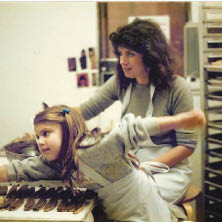
And because the biscotti di Prato, unlike most other cookies, don’t contain butter or shortening, they stay fresh longer and can be savored slowly. They’re versatile as well, delicious when coarsely ground and sprinkled on top of custard, ice cream, tiramisu and whipped cream, or used as a cheesecake crust.
La Tempesta expanded from San Mateo to a commercial kitchen in South San Francisco. At the company’s height in 1995, the bakery produced 300,000 cookies daily and was credited by the media for effectively starting the national biscotti craze. Then, in 1997, Bonnie Lynn, the “biscotti queen,” retired her crown, selling La Tempesta to Horizon Food Group of San Francisco. Not bad for an undertaking she started on a whim, as a single mother looking for ways to make ends meet.
Yet the baker still had biscotti in her blood, and in 2012, Bonnie Lynn started a small baking company in Kenwood, Boncora (Bon for Bonnie and cora from ancora, which means encore or more in Italian).
She kept her ingredients simple and natural, using white flour, almonds, sugar, vanilla and the optional chocolate. But at this new shop, Bonnie Lynn added spelt flour for a nutty flavor, making the cookies a bit more rustic and less sweet. She never stinted on the toasted almonds, with 21 pounds of nuts in each 40-pound batch of biscotti dough.

“It was more of a hobby,” Tempesta said of her mother’s new business. “We didn’t know about the cancer, but she would have obviously been sick then, and was very tired all the time.”
Since taking over, Tempesta is now owner, package designer for the 100 percent recyclable sacks, salesperson, human resource director and in charge of anything else that needs to be done. She has changed nothing about the tiny production bakery located at Kenwood Village. She commutes between her San Francisco home and the bakery, often staying over at her mother’s former house in Sonoma. The recipes — and the staff of three bakers — remain the same.
“It’s kind of ironic, but all the employees are moms, too,” said Tempesta, who does not offer retail sales at the bakery. “I think they like the flexibility of working here, and the support. If someone needs time to take care of a child, or go to a kid’s game, it’s fine. That’s how my mom always was, and it’s important.”
In another curious twist of fate, taking over Boncora has enhanced Tempesta’s still-strong love of psychotherapy. Her emphasis had been in counseling millennials on how to find and embrace their life purpose and work focus, and this year she revived her practice to one day a week, finding deeper perspective from her own recent experience.
“For me, everything I knew changed on a dime,” she said. “Thinking of this allows me to better help others, while giving a voice to my mom’s story.”
It’s a story that’s hers now, too, to explore and nurture.
“I eat, drink, breathe and dream biscotti,” Tempesta said. “And I love it. I guess you just never know where life will take you.”
To purchase online and see a list of retail shops that carry Boncora biscotti, visit boncorabiscotti.com
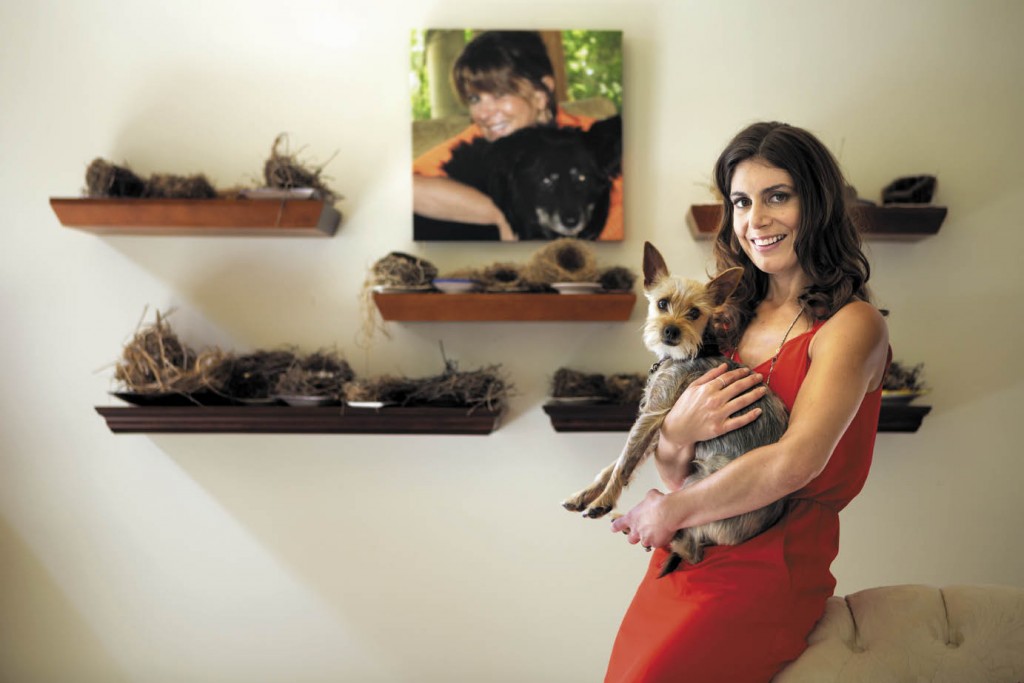
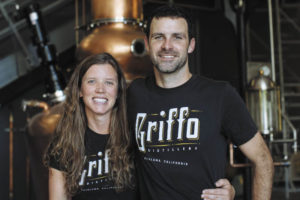
Editor’s note: This article was published in 2015. Griffo Distillery has since opened a tasting room and expanded its production line to include whiskey and vodka. In response to the COVID-19 pandemic, the company is now also making hand sanitizer.
Meet Betty. She’s the 250-gallon, custom-designed copper pot still that sits at the heart of Griffo Distillery, a small-batch spirits operation in Petaluma that launched with a traditional “London dry” gin in April, 2015.
“I believe we’ve accomplished a truly Sonoma-style gin. It has a fresh, crisp taste that reminds us of Sonoma County, especially with the addition of Meyer lemons picked from our neighbor’s tree,” said Jenny Griffo, 35, who owns the distillery with her husband and head distiller, Michael Griffo, 38.

The desire to make small-batch spirits kicked in nearly a decade ago. He thought about opening a winery, but with his doctorate in physics from UC Santa Cruz — and a love for whiskey and gin — Jenny suggested that he would be an excellent distiller. During a stint on Wall Street, Michael honed his distilling skills in their tiny New York City kitchen.
“He only flooded the bedroom a couple of times,” Jenny said with a laugh. “It was highly illegal, but we couldn’t put all of our money into something if we didn’t love it.”
At the distillery in north Petaluma, Michael puts his science mind to use with a technological approach to spirits production. For example, he wirelessly connected Betty’s controls to a computer, which runs software that monitors distillation consistency. The process allows him to control what’s happening in the still at all times, even from home.
Their Scott Street Gin, a smooth, bright spirit made with wild Italian juniper, Meyer lemons, other botanicals and a non-GMO corn spirit, sells locally for between $30 and $38.
Look for it at Bottle Barn in Santa Rosa and Wilibees Wines & Spirits in Petaluma.
Griffo Distillery, 1320 Scott St., Suite A, Petaluma, 707-879-8755, griffodistillery.com
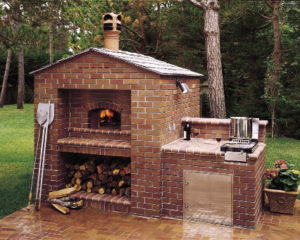
Lovers of Italian cooking, take note: The Rolls Royce of wood-fire pizza ovens, Mugnaini Imports, has made its home in Healdsburg.
The 26-year-old company is renowned for producing ovens that heat up quickly (room temperature to 1,000 degrees in less than an hour), provide a natural convection flow of heat inside the dome, and make perfect Neapolitan-style pizzas, along with other wood-fire dishes.
Constructed from Italian-made components, Mugnainis are in use at such places as the Culinary Institute of America, Chez Panisse restaurant in Berkeley and Sunset magazine’s demonstration kitchen. They can also be found in top kitchens in Sonoma, both commercial and residential.
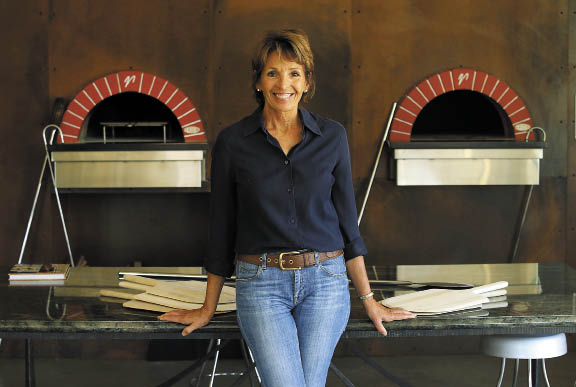
Founder and president Andrea Mugnaini moved her company to Healdsburg from an industrial park in Watsonville a few months ago, after realizing that many prospective customers “are coming out here anyway for food and wine.”
The new 15,000-square-foot Mugnaini building is a combination pizza oven showroom, cooking school, retail store and production facility.
And here’s where it gets really cool: Mugnaini regularly shares wood-fire cooking secrets at three-day Wine Country Culinary Getaways, held in a renovated farmhouse at her Alexander Valley vineyard. That’s three days of serious training on how to cook bread, fish, meats, vegetables and, of course, pizzas, in Mugnaini ovens.
For truly avid students of Italian cuisine, Mugnaini offers a trip to sigh for: a weeklong guided cooking adventure in Tuscany.
1531 Grove St., Healdsburg,
707-416-4106, mugnaini.com
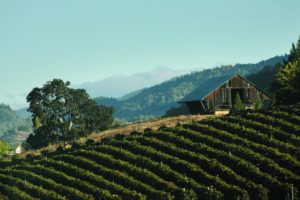
Carlisle Winery & Vineyards
2013 Monte Rosso Vineyard Sonoma Valley Zinfandel
$46
Carlisle makes outstanding, ageworthy Zinfandels, sourcing from historic sites. Structured and elegant, this grand bottling is layered in
coconut macaroon, vanilla and strawberry raspberry jam. Traces of violet and lavender are streaked in black pepper, ending in earthy
dust. (VB)
Dry Creek Vineyard
2013 Sonoma County Zinfandel
$20
North Coast Wine Challenge judges described this wine as “flawless” and “sensual” in giving it 97 points. It’s that and more, with ripe, juicy
wild strawberry and raspberry fruit, medium weight, a drizzle of dark chocolate and scintillating freshness. The price can’t be beat. (LM)
Gallo Signature Series
2013 Dry Creek Valley Zinfandel
$35
Gina Gallo’s textbook Dry Creek Valley Zin, it delivers vibrant wild raspberry and blackberry aromas and flavors, white pepper, exotic spice
and hints of anise and clove. Bold, big-bodied and hedonistic. (LM)
Guadagni Family Wines
2011 Old Vine Dry Creek Valley Zinfandel
$34
Dry-farmed vines planted more than a century ago produced this intense, peppery Zin with luscious blackberry and dark cherry fruit and a long, juicy finish. (LM)
Hamel Family
2013 Estate Sonoma Valley Zinfandel
$55
With director of winemaking Martha McClellan and winemaker John B. Hamel III at the helm, this new addition to the Sonoma Valley wine scene is already hitting it out of the park with wines like this. New oak gives this Zinfandel structure and texture, while a good proportion of stainless-steel fermentation maintains freshness and an exuberance of red and black fruit. (VB)
Matrix Winery
2013 Bacigalupi Vineyard Reserve Russian River Valley Zinfandel
$42
A complete, complex Zin from one of Sonoma’s most revered vineyards, it delivers intense aromas and flavors of wild berry, black plum, toasty
oak and dark chocolate. Sarsaparilla, dried flowers and baking spice lurk in the background; the finish is both soft and refreshing. (LM)
Ordaz Family Wines
2012 Montecillo Vineyard Sonoma Valley Zinfandel
$42
As balanced and stylish as Zinfandel gets, if offers pretty maraschino cherry, vanilla and cocoa notes and mouthwatering refreshment. Jose
Jesus “Chuy” Ordaz, who arrived in Sonoma from Mexico to become a top vineyard manager, is behind this exciting new brand. (LM)
Ridge Vineyards
Geyserville Alexander Valley 2013
$35
It’s not labeled as Zinfandel, yet the grape dominates this wine, with splashes of Carignane, Petite Sirah and Mourvedre adding complexity
and tannic structure. Ridge Geyserville has a track record of aging beautifully, but also delivers drink-now blackberry, black raspberry briar
character, with refreshing acidity. (LM)
Quivira Vineyards
2013 Black Boar Dry Creek Valley Zinfandel
$45
This new bottling combines Pinot Noir-like suppleness and polish with rambunctious blackcurrant and dark raspberry fruit, anise and pepper
spice, and cola. Full-bodied and beautifully balanced, at 14.8 percent alcohol. (LM)
Seghesio
2012 Home Ranch Estate Alexander Valley Zinfandel
$58
This classic Sonoma County Zinfandel is dry and refined, its tannins fine-grained and integrated. On the palate, expect leather and blackberry, with a shaker’s full of baking spices that lingers on the soft, velvety finish. (VB)


It seems a “plumbing issue” has closed Guy Fieri restaurant, Tex Wasabi’s “until further notice”.
A sign appeared on the Fourth St. restaurant Monday, stating that the celebrity chef’s rock and roll sushi barbecue joint would be undergoing a construction phase for a “short time” and closed “until further notice.”
Looking inside, the furniture has been removed, and floors are covered with paper.

Reps say, “The restaurant is closed temporarily for repairs and will reopen as soon as possible.” An employee who answered the phone at the Santa Rosa restaurant stated that there was a “plumbing issue” that needed to be resolved.
This isn’t the first time faulty plumbing has closed Tex Wasabi’s. In 2009, a ruptured sewer pipe caused severe water damage, resulting in a 19 month closure. As crews began renovations on the old building, more damage surfaced and more repairs were needed, said reps.
A Tex Wasabi’s restaurant in Sacramento closed in 2013 (the only other Tex Wasabi’s), as well as a Johnny Garlic’s restaurant. Guy Fieri operates two Johnny Garlic’s restaurants in Sonoma County, as well as restaurants in New York City, Baltimore, Atlantic City and Las Vegas.
Fieri appeared this weekend at a benefit to aid Valley Fire survivors.

As Sebastopol heritage turkey farmer Catherine Thode prepares her table for Thanksgiving, there will be one less family member at home. Bubba Bird, a purebred Narragansett turkey, died recently at age 9 — a long, rich life for the breed.

So while the Thode Family Farm clan will feast, as they always do, on one of their own heritage birds with all the trimmings, the members will pause to salute what they all agree was one very special fowl friend.
“We keep about 25 breeder boys year-round,” said Thode, who never really meant to become a professional farmer. But during the past decade of raising her sons in Sonoma County 4-H, she found her family’s 2.5-acre property increasingly bustling with rare-strain chickens, ducks and turkeys.
Most tom turkeys past breeding age of 3 to 5 find themselves on a platter with parsley, yet “Bubba was such a character, a total showboat,” Thode said with a laugh. “He won a reserve championship. So he stayed with us in his retirement and hung out with some of his ladies.”
Although few people will go so far as to raise a Thanksgiving entrée in their backyard, more home cooks are embracing boutique birds like Bubba, choosing them over factory-farmed Broad Breasted White turkeys, a domestic breed that is the standard for most holiday tables. Heritage fans seek the depth of flavor and darker meat of birds that are raised in pastures and fed organic feed formulated to specifications of the Livestock Conservancy, an organization that has supported heritage turkey breeds dating to the Pilgrims.
It’s efficient and economical to raise poultry industrially, Thode said, “But we’ve lost flavor along the way. The system nearly wiped out older breeds that were historically celebrated. I always thought turkey was just OK, pretty dry and bland, mostly a vehicle for gravy. But then I tasted heritage, and wow. Heritage is not like beef versus venison; it’s not gamy like a wild turkey, it’s just more intensely turkey. There’s deeper complexity, more moisture.”

Still, a heritage turkey may not be for everyone, since it has less breast meat than standard turkeys, more thigh, more bone per pound, and firmer texture. Plus, it cooks faster and can dry out if the chef isn’t paying attention.
“Most people are interested in real flavor,” said Molly Best, owner of Thistle Meats in Petaluma. “But many people may not be ready to go to heritage turkey yet, since it seems so ‘farm.’” She calls boutique Broad Breasted a gateway bird, noting that with its majority of white meat, it’s basically the same as a grocery bird, but with a much better life and diet. A Butterball Broad Breasted turkey tag discloses the carcass “contains up to 8% of a solution of water, salt, spices and natural flavor” to artificially plump it up.
In Thode Family Farm’s first year of commercial poultry sales in 2005, about 30 turkeys went to market, Thode said. This year, she’ll sell her maximum capacity of 225 Narragansetts and Standard Bronzes, at $8 a pound and with a lengthy waiting list. For the past decade, she has also headed a fundraising auction in conjunction with her local 4-H and the Russian River Slow Food convivium, scheduled for Nov. 7 at the Flamingo Resort in Santa Rosa. The conference has become increasingly popular, with select birds going for what Thode happily said is “an inflated price.”
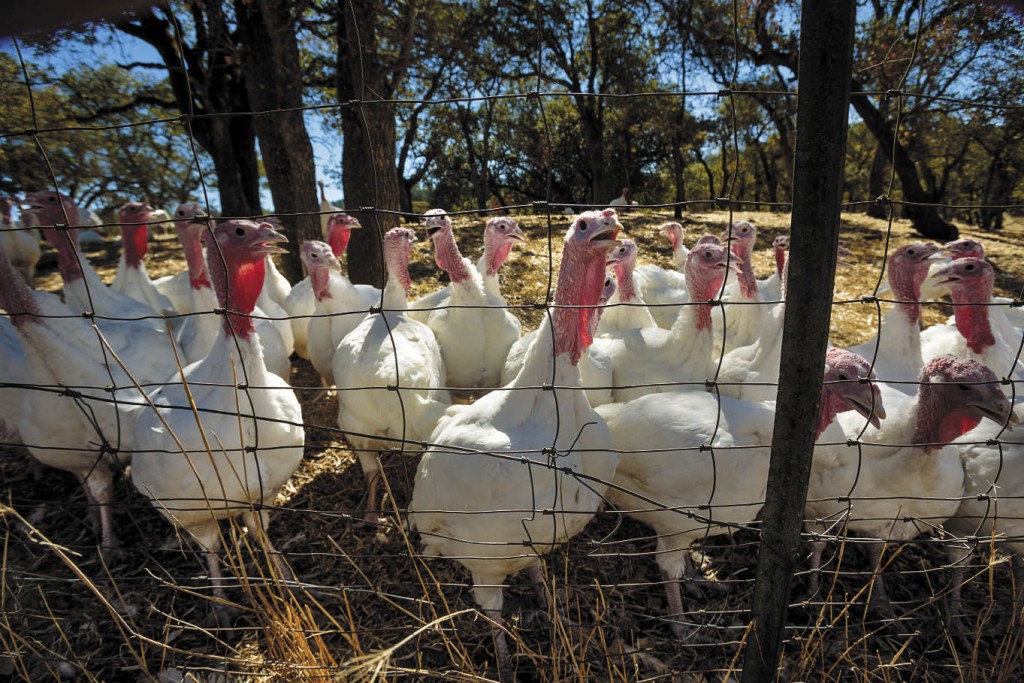
At Thistle Meats, Best is nearly doubling her order of designer turkeys from last year. Opened last spring, her shop specializes in ethically raised meats sourced only from family farms and ranchers she’s visited and knows well.
In Sebastopol, Victorian Farmstead Meat Co. owner Adam Parks will also double his inventory of boutique birds — like Best, Narragansetts and Spanish Blacks — up from 300 sold in 2014. Parks and Best get their turkeys from BN Ranch of Bolinas, which raises free-range heritage and Broad Breasted White birds with open shelters and non-GMO vegetarian diets.
“It’s a small company, and I feel like (founder Bill Niman) has a personal connection with his animals,” Best said.
The popularity of heritage turkeys marks a dramatic change from 2006, when Willie Bird Turkeys, Sonoma’s grandpappy of boutique poultry, ended a three-year experiment with heritage turkeys. General Manager Greg “Beagle” Brodsky found his customers balked at the price, then a healthy $7.50 a pound, and perhaps the stronger flavor that can be similar to duck.

Instead, the company, owned and operated by the Benedetti family since 1948, focuses on its flock of some 50,000 Broad Breasted Whites, raised in upscale style with free-range pasture and an organic-grain diet. They’re hardly cheap: This year, a 12- to 14-pound Willie Bird is offered online for $128, which includes shipping.
Whatever the breed, the real flavor difference comes in how the bird lived its life, Brodsky and his fellow farmers agree. Instead of being crowded in warehouses like most factory fowl, a happy outdoor bird is a good bird, with defined muscle texture and leaner, more flavorful meat.
“You can taste the fresh air, sunshine and natural grasses,” Parks said. “It may seem a bit tough at first bite, but that’s because there’s more tooth. It’s not mushy and flabby like a commercial bird.”
The Livestock Conservancy categorizes heritage turkeys under strict criteria. They must naturally mate (most industrial farms use artificial insemination), have a long, productive outdoor lifespan (not warehouse pens), and have a slow to moderate rate of growth.
Natural growth is critical to a turkey’s flavor, Thode explained, with meat that develops character through a bird’s longer lifetime. Mass-marketed turkeys have been selected over the decades for how quickly they can go from hatchling to harvest, typically about three months for a grocery-store bird, versus about seven months for a Thode bird. Commercial fowl also have been bred for enormous breasts and more white meat, and are usually harvested many months before sale and then frozen.
Thode harvests the weekend before Thanksgiving, chilling the carcasses but never freezing them.

If consumers are curious about why a boutique bird costs $8 a pound and more, opposed to less than a dollar as a chain-store holiday special, Thode pointed to the work it takes to handle free-range animals that can fly and have energy-pumped behavior, as turkeys do. For the Slow Food project, children hand-raise the birds from chicks, among them heirloom and endangered breeds such as Blue Slate, Lavender and Bourbon Red.
And in the end, a boutique turkey tastes like real, old-fashioned turkey.
“If your grandparents say (commercial) turkey doesn’t taste like it used to, they’re right,” Thode said. “Plus, we can feel better knowing that even if we eat our turkeys, they were raised correctly and had a very good life.”
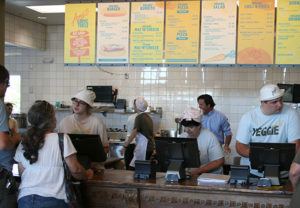
Predictions for what we’ll be eating (and what we won’t) are rolling out, as industry ball-gazers see what’s hot and what’s not.
This week, one of the biggest trend-watchers, Baum + Whiteman, released their forecast for restaurant trends 2016, and they rang pretty true to what we’re seeing around the Bay Area. Here’s a wrap-up of some of the most relevant new trends and “disruptors”, and where you can find them locally.

1. Healthification of fast food: Fast and fast-casual restaurants are ramping up the good stuff and starting to eliminate the bad stuff on their menus. Local vegetarian fast-food concept, Amy’s Drive Thru is at the forefront of the movement. Chains like Chipotle, Panera, Subway and even McDonalds are finding ways to clean up their menus, ridding everything from GMO’s to artificial flavorings.

2. Newish Jewish: Chefs are embracing heritage cuisines like grandma’s matzoh ball soup and homemade bagels. Find bagels, Bialy’s and regional specialties like Shakshuka at Goodman’s Jewish Deli (West End Sunday Market, various Friday nights at St. Florians in Windsor). Bird and the Bottle does a take on matzoh ball soup with ramen broth and smoked chicken.

3. Veggies Rule: Plant-based dishes are gaining traction as consumers seek out healthier options when eating out. With the luxe produce in our region, its not hard to create impressive meat-free dishes that still taste delicious. Seed on the go, Seed to Leaf in downtown Santa Rosa.

4. Poke is the new Sushi: Hawaiian-style poke is having its moment. Typically a mix of ahi tuna, sesame oil, chilis, sesame seeds and soy sauce, its Hawaiian-style tuna tartare. We love it at Santa Rosa Seafood, along with an Asian-style tuna tartare at John Ash and Co., Belly Left Coast Kitchen and can’t wait to try rock cod poke at the recently-opened Ninebark in Napa.


5. Globalized Ramen: I’ve caught the ramen bug. Though Sonoma County has had various versions at sushi restaurants for years (and lo, how we miss the perfect ramen at the-before-its-time Shimo in Healdsburg), this Japanese noodle soup is getting easier to find. Ramen Gaijin is the place for obsessively authentic ramen, but we also love the pork ramen at Shige Sushi.

6. Seaweed is the new Kale: Move over kale, because seaweed is finding its way into everything. With huge health benefits, sustainability and a briny flavor that more Americans are learning to love, one of our favorite ways to eat it? Snacks. We’re obsessed with the local and Seaweed Bakin’ from The Great and Wonderful Sea of Change Trading Co. from Windsor. The small company hand-harvests locally in the late spring, as well as sourcing from other sustainable sources.
7. Tipping Is Out, Living Wages are In: There’s been lots of news lately about restaurants ending tipping and adding gratuity of 18% (or more) to the checks in order to provide living wages for their employees. There’s been lots of backlash from restaurant-goers in the past, but the tide seems to be turning as consumers become more educated. Pullman Kitchen bravely tried it when it opened (and dropped it after a lot of flack), but now Peter Lowell’s is giving it a shot. We think you’ll see more of this trend as consumers get wise to the real costs of restaurants.
8. Dinner to your door: Although chic food and restaurant delivery services like UberEats, Postmates and AmazonPrime Now are focused on larger urban areas, Sonoma County isn’t stranded. Yelp’s Eat24hours.com, FoodToYou.com, and PetalumaFoodTaxi.com will deliver from a list of restaurant partners to deliver everything from cookies to barbecue.
Want something more personalized? Chef-driven meal delivery services like Ruthy’s Real Meals are finding a niche, offering vegetarian, vegan and omnivorous entrees. If you’re willing to pick-up, we’re fans of Three Leaves Foods’ seasonally-inspired menus. We’re also hearing great stuff about meal-in-a-box delivery services like Blue Apron, Hello Fresh, Mark Bittman’s Purple Carrot and Plated.com. What once seemed a luxury has become a fast way to hang on to the tradition of a family meal.
Here are a few more buzz words you’ll be seeing: Falafel appearing as vegetables in serious restaurants. Kombucha going mainstream. Burnt vegetables. “Shack” in restaurant names. Everything bagel seasoning mix. Root-to-stalk cooking. Adding seaweed to popcorn. More automation and kiosks in fastfood, fast-casual restaurants … speeding service, saving labor. 3-D food printers. General Tso flavorings. Alcoholic beverages in quick-service restaurants. Paella. Fast feeders complicating their lives by adding build-your-own options. Values, not value … consumers scrutinizing restaurants’ policies on health-wellness, sustainability, additives, GMO, animal welfare, Nashville Hot Chicken. Fallout in frozen yogurt chains … juice bars may be next. Food halls galore — maybe too many. War on food waste. What happened to bone broth? Philippine cuisine.

Want to sip something different during the holidays? Head to these local watering holes for a comforting cocktail created with warmth in mind, or shake one up yourself. Three top-notch bartenders offer distinctive drinks they serve this time of year.
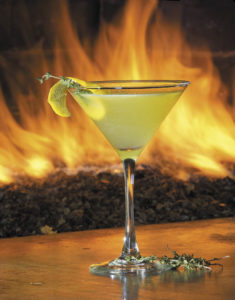 El Dorado Kitchen
El Dorado Kitchen
Sonoma
“To me, a well-crafted cocktail, with the perfect balance of ingredients and a bit of love, can unlock beautiful memories,” head bartender Kenny DeAlba said.
“Winter and Christmas being my favorite time of year, I created this ‘thymely’ cocktail that brings friends, family and loved ones together. That’s my passion and goal: Create cocktails that help bring great memories.”
Father Thyme
(serves 1)
3 sprigs thyme
1½ ounces Osocalis brandy
½ ounce Drambuie
½ ounce honey water
½ ounce lemon juice
lemon peel for garnish
Place the thyme sprigs in a shaker and muddle them to release their oils. Add the remaining ingredients and shake well to combine. Double strain into a martini glass and garnish with the lemon peel.
Spoonbar
Healdsburg
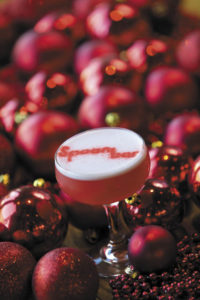 “When the weather gets colder, it’s a no-brainer to turn to the classic whiskey cocktails: Old-Fashioneds, Manhattans, savory drinks,” bar manager Alec Vlastnik said. “I like to enhance these recipes by adding winter spices and flavors to make them even more winter-friendly.
“When the weather gets colder, it’s a no-brainer to turn to the classic whiskey cocktails: Old-Fashioneds, Manhattans, savory drinks,” bar manager Alec Vlastnik said. “I like to enhance these recipes by adding winter spices and flavors to make them even more winter-friendly.
“That’s where the Fireside Sour came from. The bourbon we use for this cocktail is beautiful stuff. When you put our house-made blood orange syrup and add spices like clove and cinnamon, you have a drink that makes you start thinking about fireplaces and good times with family. The cranberry bitters balance the drink with a touch of acidity and smell like Thanksgiving.”
Fireside Sour
(serves 1)
1½ ounces W.L. Weller Special Reserve Bourbon
½ ounce Campari
½ ounce Pür Likör Spice Blood Orange Liqueur
¾ ounce lemon
½ ounce egg white
dash cranberry bitters
Combine all the ingredients in a shaker, without ice, and shake for 15 seconds to fluff the egg white. Add 1 cup of ice and shake for another 15 seconds. Double strain into a martini glass and finish with the dash of bitters.
Stark’s Steak & Seafood
Santa Rosa
 “Glogg liqueur is really unique and we were looking for a way to highlight it in a new cocktail,” bar manager Mamadou Diouf explained. “We came up with the Broken Halo as a different take on the classic ‘holy trinity’ of winter spices: the cardamom, cloves and cinnamon that are prominent in the liqueur.
“Glogg liqueur is really unique and we were looking for a way to highlight it in a new cocktail,” bar manager Mamadou Diouf explained. “We came up with the Broken Halo as a different take on the classic ‘holy trinity’ of winter spices: the cardamom, cloves and cinnamon that are prominent in the liqueur.
“You think about these flavors in eggnog, fruitcake and all those great holiday sweets. In this cocktail, there’s a bit of fruitiness from the Aperol, but the acid and bitter notes tie everything together to create a drink that is more refreshing than warming.”
Broken Halo
(serves 1)
1½ ounces vodka
½ ounce Geijer Glögg liqueur
½ ounce Aperol
1 ounce lemon juice
1 dash Angostura Bitters
1 ounce simple syrup
sage leaf
Put all the ingredients in a mixing glass with ice. Shake well, and double strain into a martini glass. Garnish with the sage leaf.

Sonoma winter is more a state of mind than a time for bracing against snow and sleet. Sonomans are quick to nestle by the fire with a glass of Cabernet Sauvignon while waiting for Santa’s sleigh, even if the sun is shining and the temperature mild. With this in mind, Heather Irwin offers some great gifts to put under the tree — or in your own stocking.
 Terry, Terry Christmas
Terry, Terry Christmas
Sonoma’s winter temperatures can go from balmy to frigid in a matter of hours, which is why most of us carry a sweatshirt or three in the car. The Diana Wrap from Evy’s Tree is a cozy but classy French terry wrap with a comfortably loose fit. Headed to the coast? The cable-knit collar and hood warm things up, and a kilt pin secures against the Pacific chill. Made in Sonoma by gals who get it.
$119.95, evystree.com
Start your little tyke out right with this handmade baby hoodie made from organic cotton jersey with a toasty (yet soft) thermal lining and hand-woven Guatemalan fair-trade fabric. All of Hippie Baby’s clothes and blankets are made in Sebastopol
and vary a bit, but who wants cookie-cutter
baby fashion, anyway?
$45, online only at Hippie Baby Organics, hippiebaby.org
Give Yourself a Hand
 When the weather gets nippy, bathe your hands in tasty (recycled) cashmere hand warmers. These fingerless gloves come in every shade of the rainbow and perhaps a few more. Made locally, they’re snapped up in a heartbeat every fall.
When the weather gets nippy, bathe your hands in tasty (recycled) cashmere hand warmers. These fingerless gloves come in every shade of the rainbow and perhaps a few more. Made locally, they’re snapped up in a heartbeat every fall.
$40, Ethical Clothing, 122 Kentucky St., Petaluma, 707-769-8564, ethicalclothing-petaluma.com
What has Fido been rolling in today? Peee-ewww!
Combat your puppy’s proclivity for the putrid with a Soapy Tails Bathe & Groom Gift Set. It’s everything you need to get his coat soft, his paws supple and that awful stench out.
$40, Circle of Hands, 6780 McKinley St., Suite 120, Sebastopol,
707-634-6140, circleofhandswaldorfshop.com; also at soapcauldron.com/soapy-tailssoapy tails.tif
We heart Wine Country’s professional baseball team. Based in the town of Sonoma, the Sonoma Stompers are a bootstrapping squad that locals love, despite a rough 2015 season. Show your Stomper Pride with a traffic-stopping orange trucker cap while you wait for next season to start.
$17.99, stompersbaseball.com
Dry, dead lawns are a drag, but watering could get you in serious trouble during the ongoing drought. Save this winter’s precipitation like a champ with 55-gallon rain barrels from BlueBarrel Systems in Santa Rosa, to capture roof runoff and hold it for drier days. Why the color blue? It’s the industry standard for food-grade containers, so your upcycled water barrels may have previously held anything from hot sauce to grape juice. Prices vary, but a simple
two-barrel system starts at about $250.
707-394-5009, bluebarrelsystems.com
Give the gift of the outdoors: an annual Sonoma County Regional Parks Pass that gives holders access to more than 50 regional parks, from Gualala to Petaluma. The pass includes free parking, a night of camping, admission to the Tolay Fall Festival in October and discounts at several outdoor recreation stores. Purchases also support the infrastructure of our insanely beautiful local park system. Win, win.
$69, Sonoma County Regional Parks,
2300 County Center Drive, Suite 120A,
Santa Rosa, 707-565-2041,
parks.sonomacounty.ca.gov
Designers dream in all the colors of Annie Sloan’s Chalk Paint (not chalkboard paint), the darling of Pinterest and DIYers around the globe. It’s a matte-finish paint that needs no priming or sanding, comes in vintage-y colors such as Duck Egg Blue and Paris Grey, and works perfectly for restyling that dinged-up old side table in your mom’s garage.
$39.95 a quart, ShabbyGirl Furniture at Summer Cottage, 153 Kentucky St., Petaluma, 707-776-2873, summercottageantiques.com
Mention Alembic to any bass player and watch a look of deep wistfulness come over his or her face. The Bentley of electric basses, Alembic’s custom-made instruments take months to craft in the Santa Rosa factory, using exotic woods, mother-of-pearl inlays and curves anyone would envy. Our personal fave is the Series II: With a heart-shaped tailpiece and wide body, this guitar is all about the bass. No treble.
$23,500 and up, 707-523-2611, alembic.com. Factory visits available by appointment.
A Bog of Your Own
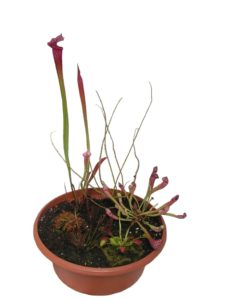 Carnivorous plants say, “I love you,” in a way that’s, well, unique. California Carnivores’ Make Your Own Bog (Deluxe Kit, natch), includes the ever-popular Venus’ flytrap, pitcher plants, sundews and perhaps the most horrifying of them all, bladderworts (hundreds of tiny bladder-like traps hide in their aquatic stems). How you choose to feed these meat-eating flora is up to you. Bugs, beware.
Carnivorous plants say, “I love you,” in a way that’s, well, unique. California Carnivores’ Make Your Own Bog (Deluxe Kit, natch), includes the ever-popular Venus’ flytrap, pitcher plants, sundews and perhaps the most horrifying of them all, bladderworts (hundreds of tiny bladder-like traps hide in their aquatic stems). How you choose to feed these meat-eating flora is up to you. Bugs, beware.
$69.95, California Carnivores, 2833 Old Gravenstein Highway, Sebastopol, 707-823-0433, californiacarnivores.com
It’s Your Bag
You don’t hand down pleather purses to your grandkids. This, however, is an heirloom piece they’ll fight over after you’ve broken it in for  decades. Using butter-soft leather, artist Chantel Garayalde sews each piece, adding a bit of quirk and personality to each bag. Age and use only improve the feel, and metallic embellishments like her trademark heart are an added conversation starter that will put any Fendi or Gucci to shame.
decades. Using butter-soft leather, artist Chantel Garayalde sews each piece, adding a bit of quirk and personality to each bag. Age and use only improve the feel, and metallic embellishments like her trademark heart are an added conversation starter that will put any Fendi or Gucci to shame.
$1,400, Tamarind, 180 Morris St., No. 70, Sebastopol, 707-861-9531, chantelgarayalde.com
Only after mastering the science of cooking can you think about the art, because a dried-out pork chop is still a dried-out pork chop, no matter how well you plate it. Cooking Light magazine columnist and SeriousEats.com culinary director J. Kenji Lopez-Alt breaks down techniques and does rigorous testing for everything, from the perfect Thanksgiving turkey to ideal onion rings, in his book, “The Food Lab: Better Home Cooking Through Science” (W.W. Norton and Co.). The tome is a hefty 958 pages, perfect for perusing by the fire.
$49.95, Readers’ Books, 130 E. Napa St., Sonoma, 707-939-1779, readersbooks.com